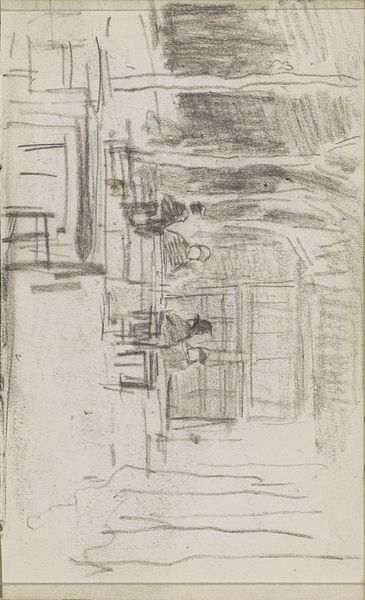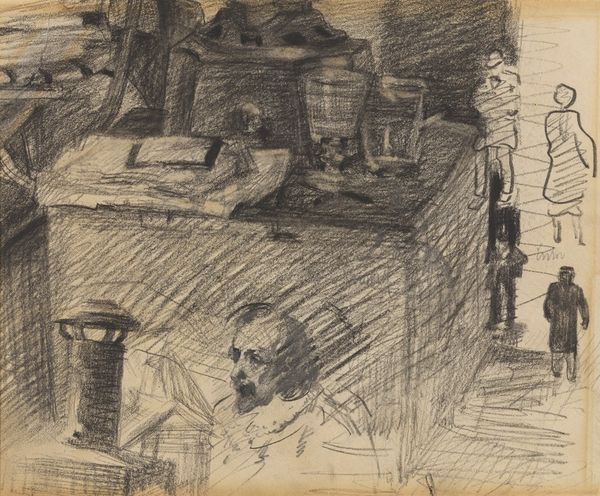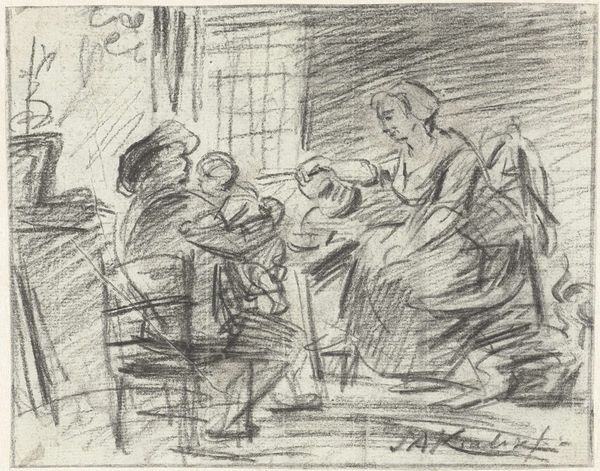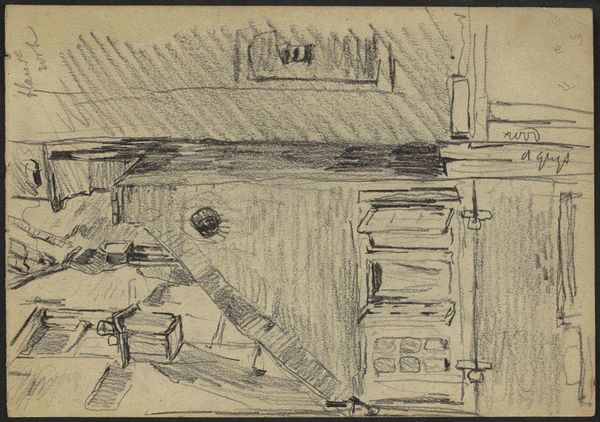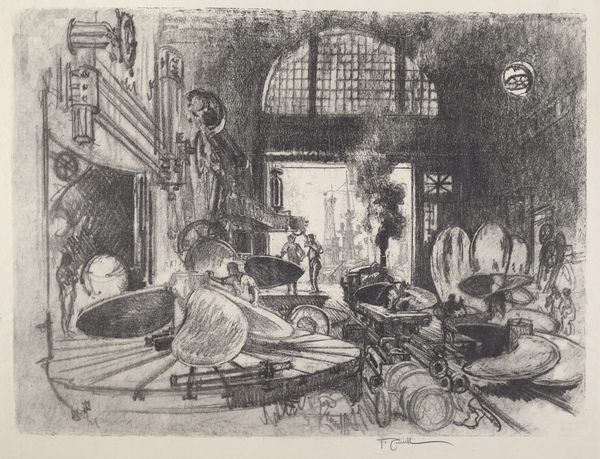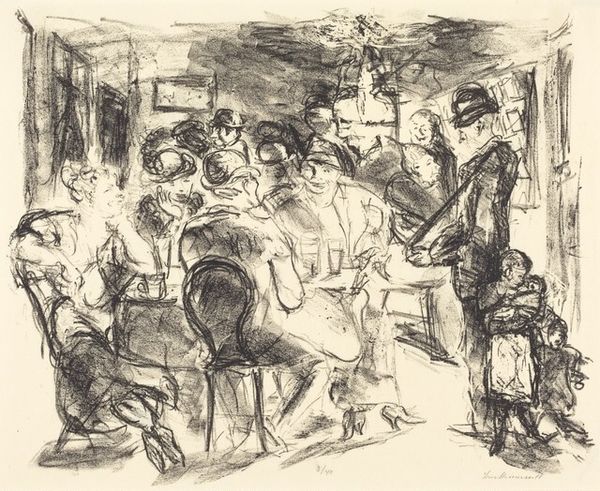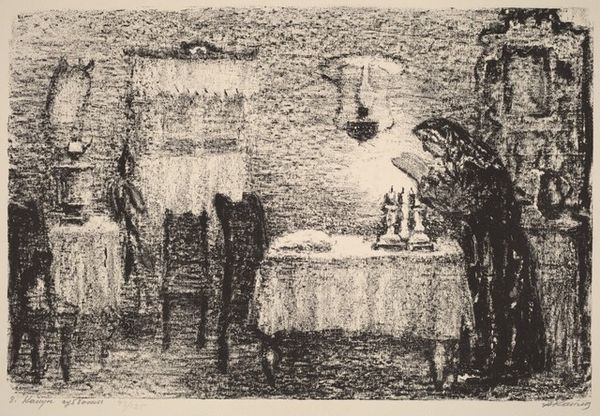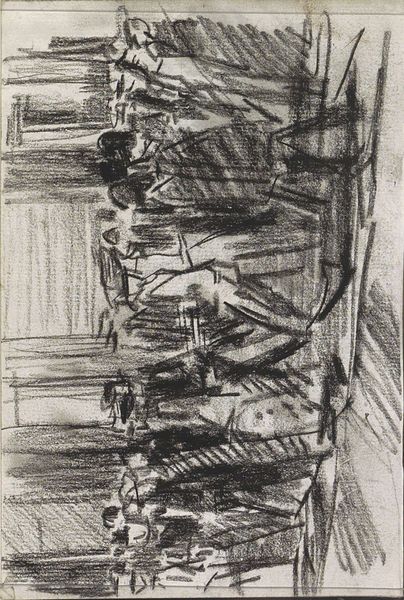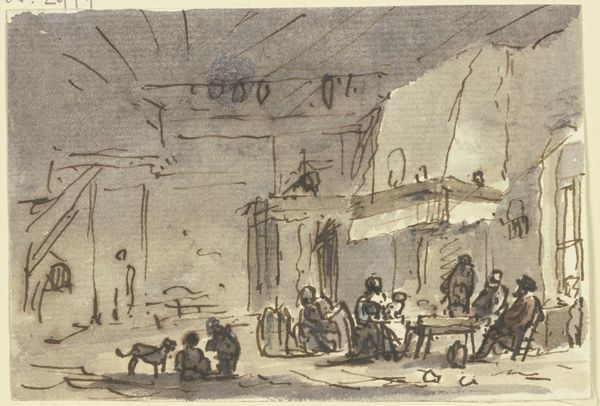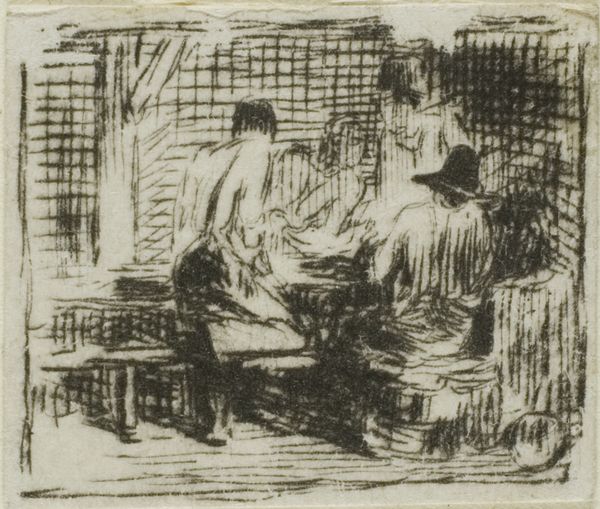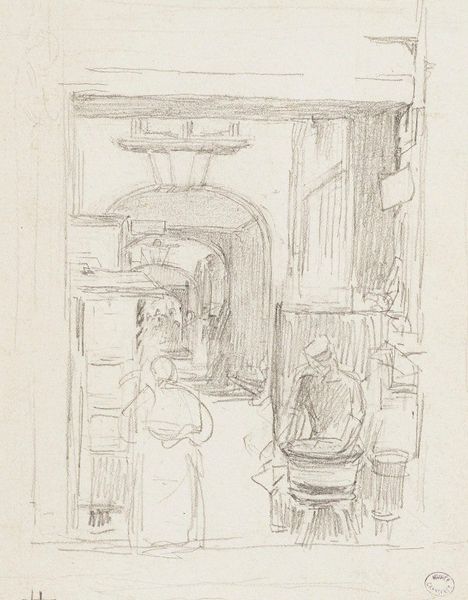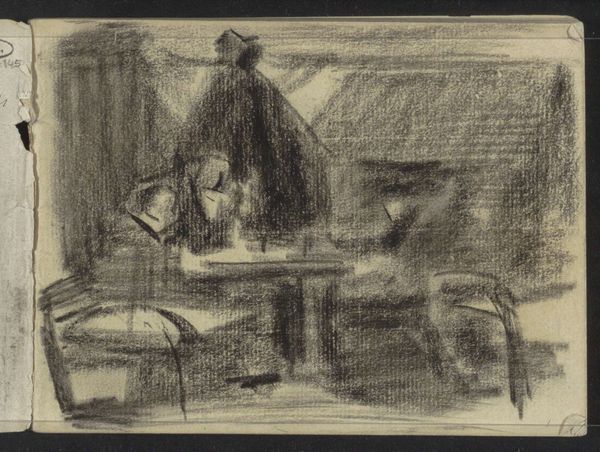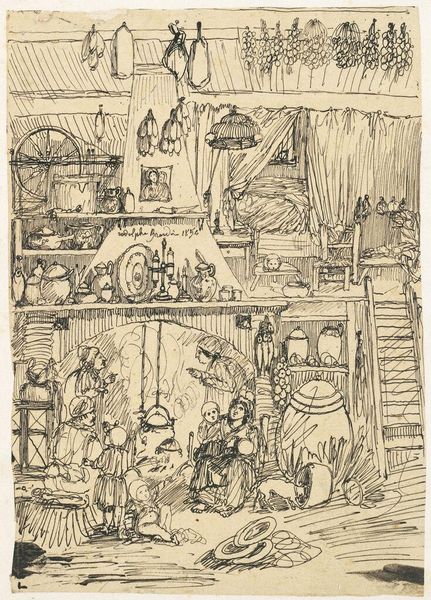
drawing, ink, architecture
#
portrait
#
drawing
#
impressionism
#
figuration
#
ink
#
genre-painting
#
architecture
Copyright: Public domain
Editor: So, this is Van Gogh's "Interior with Woman Sewing" from 1884. It's an ink drawing, and what strikes me is how stark and almost claustrophobic the interior feels. What do you see in this piece? Curator: It's fascinating how Van Gogh uses such simple means to convey the weight of domesticity. This drawing, for me, speaks volumes about the invisible labor of women. Notice how the woman is positioned by the window, perhaps a visual metaphor for her limited sphere? Think about the social context: a woman's work, especially sewing, was crucial for survival, yet often unacknowledged, undervalued. The starkness you mentioned reflects, in part, that social invisibility. What do you think her social position might have been? Editor: Probably working class, right? Given the sparse interior and the practical nature of sewing… it wasn't a leisurely pursuit. Curator: Exactly. Van Gogh, particularly early in his career, was drawn to depicting the lives of working people, elevating their experiences. Consider this in relation to the dominant art world which was focusing on entirely different themes and demographics. What might he be trying to say? Editor: Maybe he's trying to force us to confront the reality of working-class women, make their unseen labor visible? I hadn’t considered it that deeply before, to be honest. Curator: Absolutely. And the composition itself emphasizes this. The sharp lines, the lack of embellishment… it's a deliberate choice, a political one even. He's resisting the romanticized view of women and labor often depicted. Think of how Impressionists were using light to celebrate leisured society, in stark contrast with the content, style, and overall message of this work. It's also useful to keep in mind the absence of direct, lived experiences represented, particularly how female figures are portrayed mostly through the male gaze. What we could really do with is something like a rewriting, adding to what is missing. Editor: Wow, I see it so differently now. It's not just a simple interior; it's a statement. Curator: Indeed. Art is never neutral; it reflects and shapes the world around us. Considering the political dimensions is key to really 'seeing' a work like this, understanding whose story it’s telling, and whose it is omitting.
Comments
No comments
Be the first to comment and join the conversation on the ultimate creative platform.

